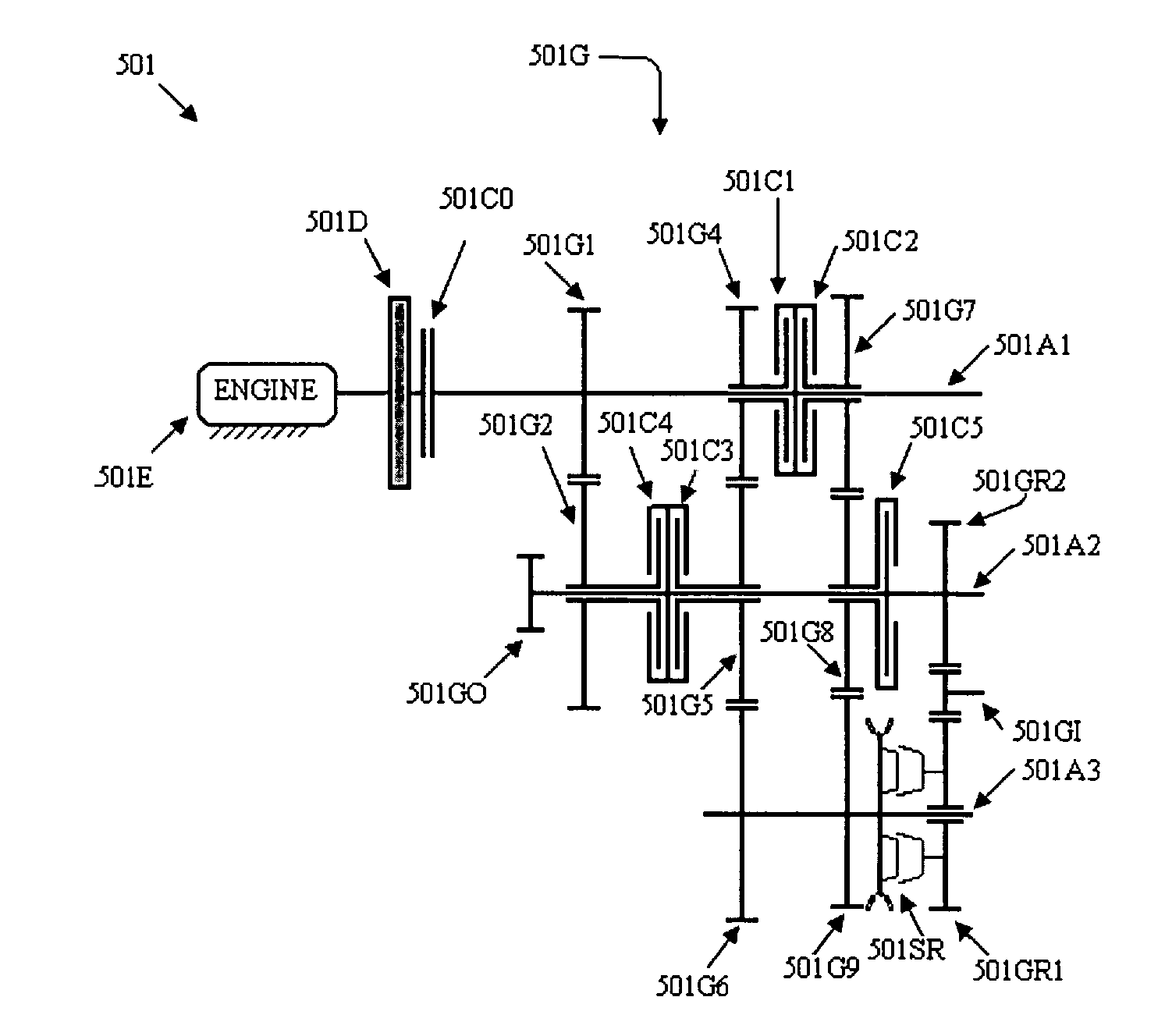Transmission Gearbox Family in Parallel Shaft Transmission System
a transmission gearbox and gearbox technology, applied in mechanical equipment, transportation and packaging, gearboxes, etc., can solve the problems of multi-speed transmissions, reduce the efficiency of torque converters, and low mechanical efficiency, so as to reduce the slippery speed of relative clutches, increase the durability of transmissions, and minimize heat
- Summary
- Abstract
- Description
- Claims
- Application Information
AI Technical Summary
Benefits of technology
Problems solved by technology
Method used
Image
Examples
Embodiment Construction
[0064]A powertrain system 501, shown in FIG. 1, has a conventional engine 501E and a five-speed transmission gearbox 501G.
[0065]The five-speed transmission gearbox 501G includes a mechanical damper 501D, a main clutch 501C0, an input shaft 501A1, an output shaft 501A2 which has a fixed output gearwheel 501GO to transmit torque to a final drive(not shown) and an intermediate shaft 501A3. 501A1 is selectively interconnected with 501C0. 501G also includes a plurality of forward driving gearwheels 501G1, which is fixed on 501A1, 501G2, 501G4, 501G5, 501G6, 501G7, 501G8 and 501G9 which are free to rotate and selectively interconnected with input shaft 501A1, the output shaft 501A2 and the intermediate shaft 501A3 by clutches 501C1, 501C2, 501C3, 501C4 and 501C5, and a synchronizer 501S1, respectively. 501G6 and 501G9 are linked with each other on the intermediate shaft 501A3. 501G also has a reverse driving gearwheel 501GR1 which is free to rotate and selectively interconnected with the ...
PUM
 Login to View More
Login to View More Abstract
Description
Claims
Application Information
 Login to View More
Login to View More - R&D
- Intellectual Property
- Life Sciences
- Materials
- Tech Scout
- Unparalleled Data Quality
- Higher Quality Content
- 60% Fewer Hallucinations
Browse by: Latest US Patents, China's latest patents, Technical Efficacy Thesaurus, Application Domain, Technology Topic, Popular Technical Reports.
© 2025 PatSnap. All rights reserved.Legal|Privacy policy|Modern Slavery Act Transparency Statement|Sitemap|About US| Contact US: help@patsnap.com



